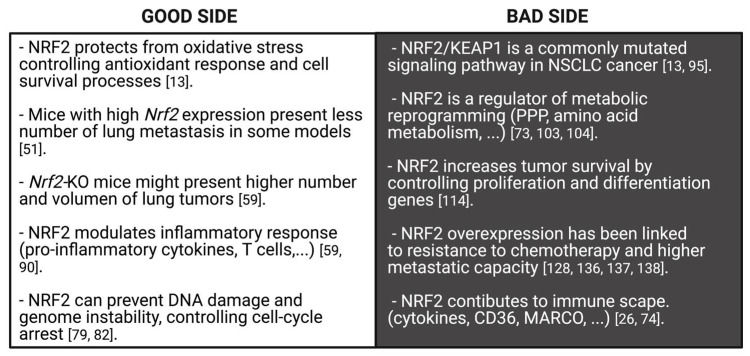Figure 5.
Good and bad sides of NRF2 against lung cancer. NRF2 exhibits a dual role in lung cancer. On one hand, NRF2 protects from oxidative stress generated in cancerous development by controlling genes implicated in antioxidant and cell survival processes, which maintain an appropriate level of intracellular antioxidants. Indeed, NRF2 prevents DNA damage, genome instability and cell cycle-arrest. Moreover, NRF2 modulates the inflammatory response through an increase of T cells. As a consequence, Nrf2-knockout mice show high number and volume of lung tumors and Nrf2-high mice present a small number of lung metastasis. On the other hand, the NRF2/KEAP1 pathway is a commonly mutated signaling pathway in human lung cancer and some pro-oncogenic functions of NRF2 provide an advantageous condition for the progression of cancer cells. NRF2 is an important regulator of metabolic reprogramming and cancer proliferation. Both processes are important for cancer progression. Concurrently, NRF2 overexpression has been correlated with lower sensitivity to chemotherapeutic drugs and with high metastatic capacity. Finally, NRF2 contributes to immune escape by inducing a decrease of pro-inflammatory cytokines.

